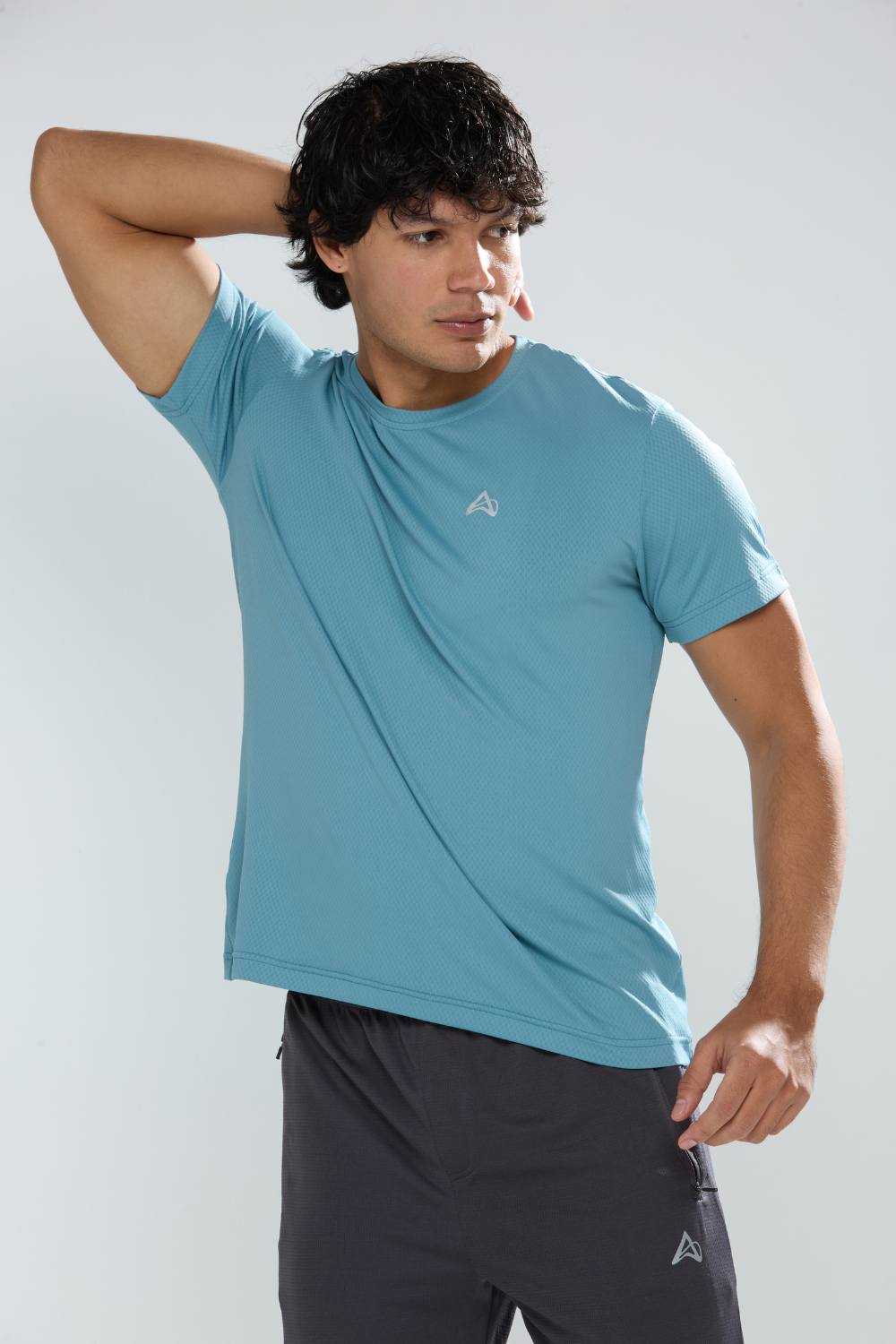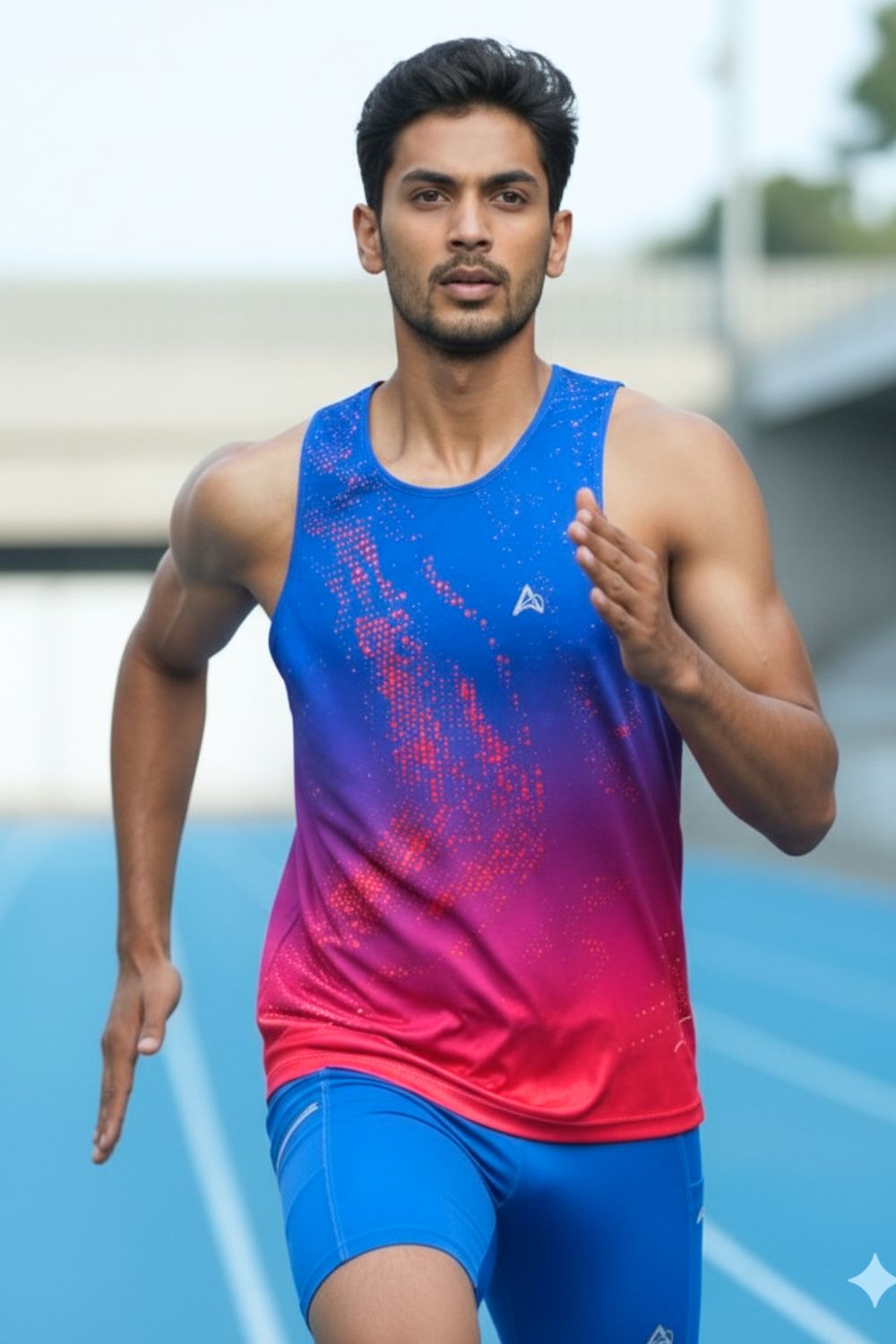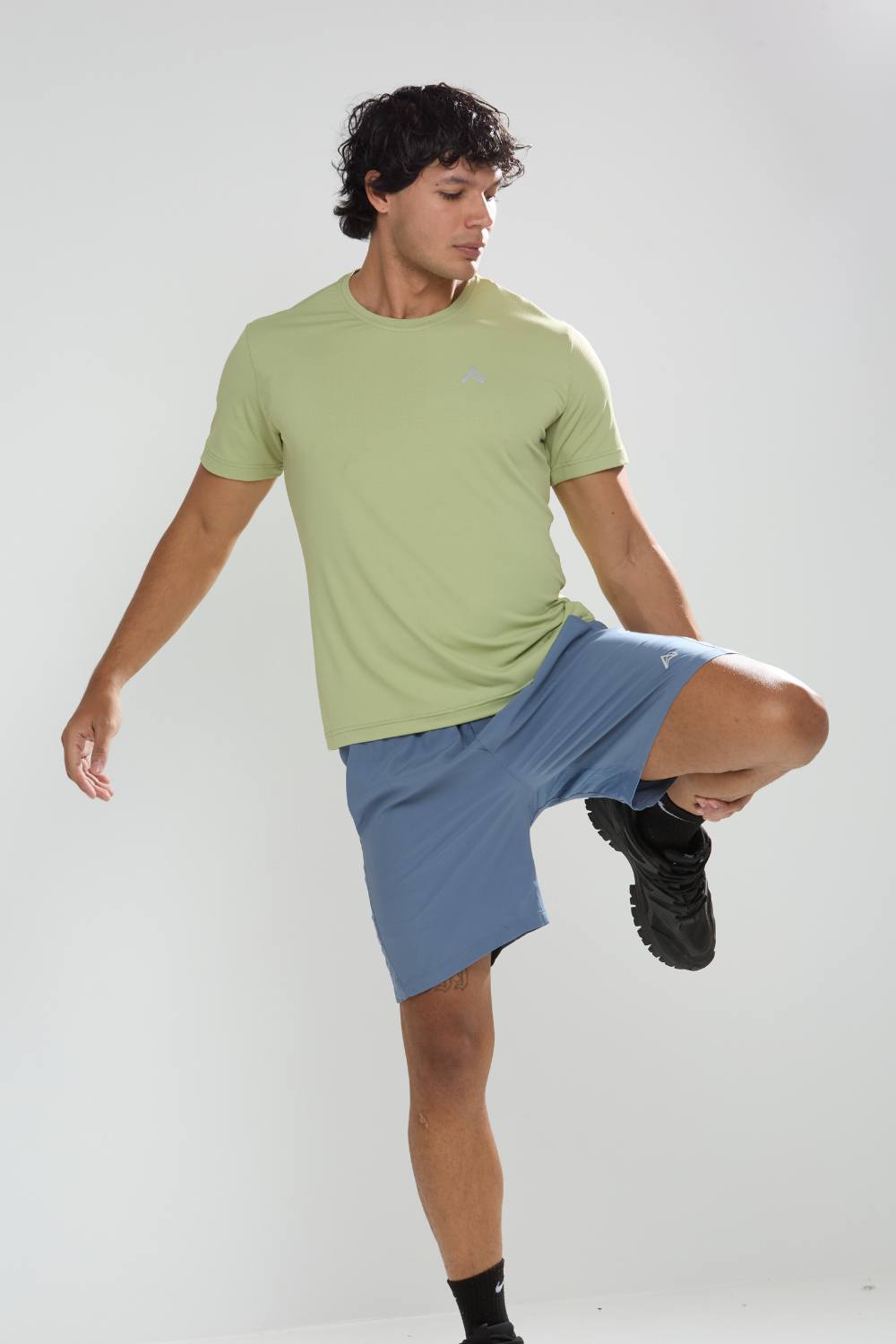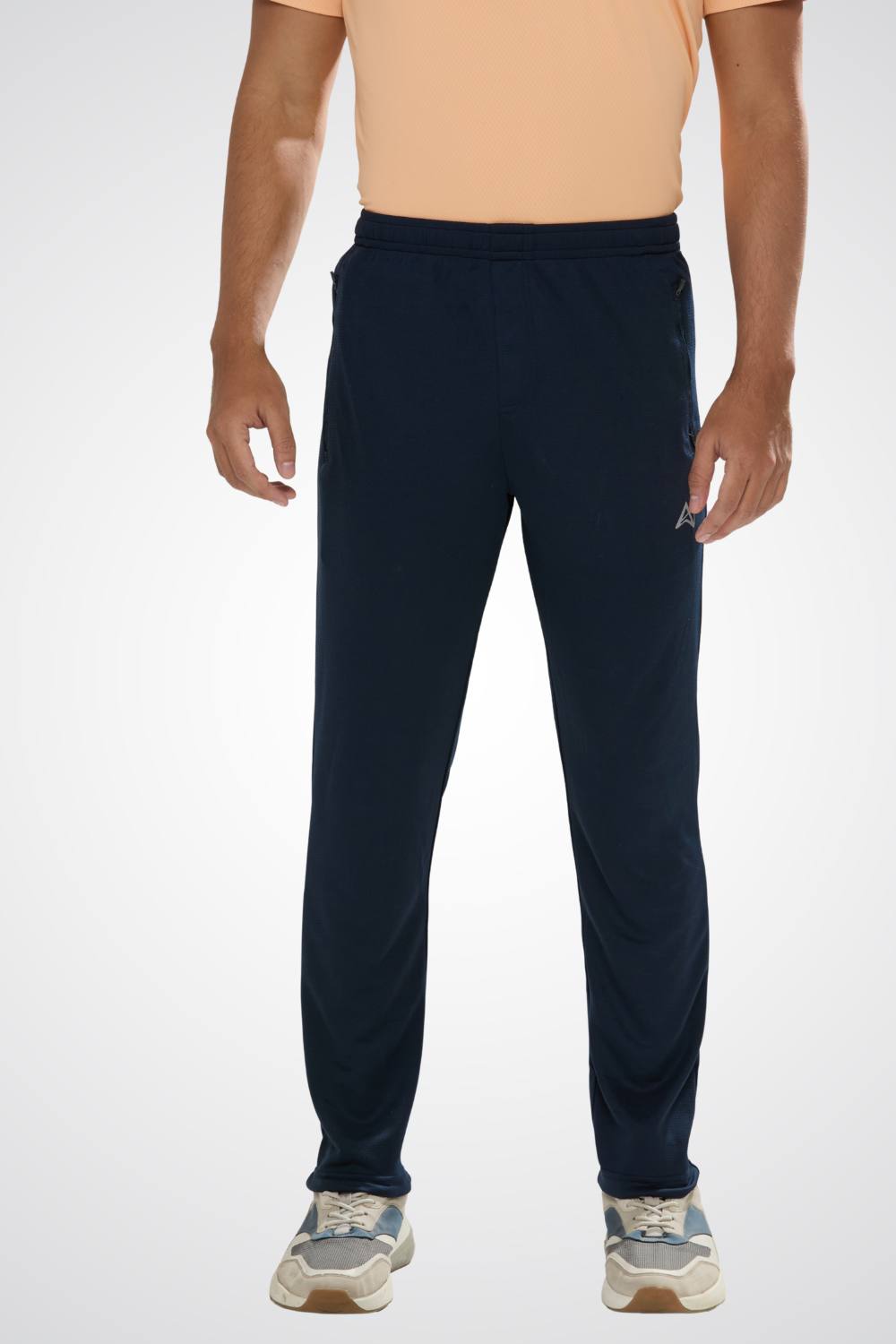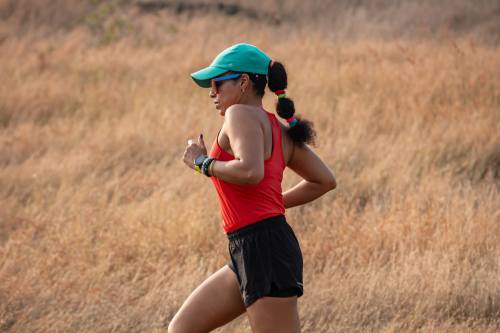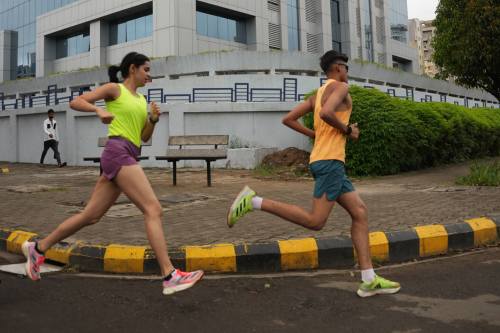Quick Listen:
In the heart of Brooklyn on a brisk September morning in 2025, runners glide along the waterfront, their lightweight tops shimmering under the rising sun as they weave past cyclists and early risers. This scene, repeated across global metropolises from Tokyo's bustling parks to London's Thames paths, underscores a profound shift: urban running has evolved from a solitary pursuit into a vibrant, communal ritual. What began as a response to sedentary city life has blossomed into a full-fledged cultural movement, one that demands apparel engineered for the unpredictable rhythms of metropolitan movement. No longer content with basic gym wear, today's urban athletes seek gear that wicks away sweat during humid dashes and layers seamlessly for cooler evenings all while turning heads on the commute home.
This transformation is more than anecdotal; it's backed by robust market dynamics reshaping the performance apparel sector. The global cooling fabrics market, essential for such breathable innovations, stood at $1.83 billion in 2024 and stands poised to expand to $2.94 billion by 2030, propelled by an 8.3% compound annual growth rate from 2025 onward. This upward trajectory stems directly from heightened consumer appetite for apparel that boosts comfort and elevates athletic output, especially in athletic and outdoor pursuits. North America commands a commanding 33.8% revenue slice as of 2024, while Asia Pacific anticipates a slightly brisker 9.0% CAGR, reflecting the region's humid climates and burgeoning fitness scenes.
Tired of gear that slows you down? Chafing, soggy fabrics, and missing pockets kill your run's momentum. At Aguante, we're runners who get it. Our high-performance activewear features moisture-wicking fabrics, ergonomic designs, and smart storage to keep you focused. Shop Now!
The Urban Fitness Boom
Cities, with their dense populations and limited green spaces, have ingeniously repurposed streets and sidewalks into de facto running tracks. Towering skyscrapers frame these paths, where joggers navigate traffic hums and pedestrian flows, blending exercise with the pulse of daily life. Health consciousness, amplified by post-pandemic wellness priorities, has supercharged this trend. Social media platforms brim with footage of dawn patrols and sunset sprints, inspiring novices and veterans alike to hit the pavement.
Urbanization amplifies these habits, as swelling populations in megacities foster tailored fitness ecosystems. Running collectives flourish in hubs like Los Angeles and Berlin, transforming group runs into hybrid social-fitness experiences that build community amid isolation. Marathon fever grips these locales, with events drawing thousands who train amid urban sprawl. Fitness personalities further ignite participation, posting cityscape-clad workouts that normalize running as an accessible escape.
These shifts manifest in compelling figures. The global running apparel market registered $42.3 billion in 2024, with projections reaching $63.7 billion by 2031 at a steady 5.9% CAGR through the forecast period. This expansion owes much to health-focused consumers diving deeper into jogging and related activities, alongside a burgeoning urban fitness ethos. Awareness of performance clothing's advantages, coupled with strides in fabric engineering, accelerates uptake. Outdoor pursuits, amplified by influencers and worldwide endurance races, further bolster the segment's momentum.
Demographic nuances add layers. Women's surging involvement in running projected to grow at a 9.21% CAGR through 2030 has ignited calls for apparel attuned to female forms and preferences. Meanwhile, emerging markets thrive on urbanization and income gains, with Asia Pacific eyeing an 8.32% regional CAGR. Initiatives like expanded bike lanes and school fitness programs in these areas weave running into urban fabric, sustaining long-term demand.
The Fabric of Performance
At the core of this revolution lies the material itself: fabrics that breathe, adapt, and endure the city's whims. Urban runners contend with everything from sweltering subways to drizzling downpours, necessitating gear that's featherlight yet robust. Breathability reigns supreme, channeling moisture away to prevent chafing during extended loops, while thermal control ensures comfort across seasons.
Synthetics lead this charge, capturing 69.2% of the cooling fabrics revenue in 2024 for their unmatched sweat-handling prowess, resilience, and affordability hallmarks in athletic essentials. Yet naturals like cotton and wool aren't sidelined; they're forecasted for a 7.8% CAGR, prized for inherent cooling in muggy settings. Innovations abound: UV barriers shield against midday glare, antimicrobial finishes curb odors for all-day wear, and advanced weaves promote airflow without bulk.
Athleisure's ascent dissolves barriers between gym and street, yielding versatile pieces that perform on trails and translate to casual outings. This fusion resonates across ages, merging utility with urban chic. As running apparel revenues touched $90.44 billion in 2025, en route to $131.89 billion by 2030 via a 7.84% CAGR, the narrative clarifies: progress in materials dovetails with lifestyle integration, broadening appeal. Women's designs, tailored for inclusivity, underscore this, while premium touches in developed regions and economic lifts in developing ones fuel the fire.
Europe's athleisure surge in places like the UK, Latin America's response to urban heat islands, and Asia's fitness boom all highlight how environmental cues drive adoption. These textiles don't just clothe; they empower runners to conquer concrete without compromise.
Brands Leading the Charge
Step into a major city race, and the landscape reveals innovation in motion: vests that evaporate perspiration on contact, shorts that flex through strides, tops that layer without weight. Trailblazers like Nike with its Dri-FIT system meticulously crafted to draw moisture outward dominate, ensuring dryness amid exertion. Under Armour's CoolSwitch variants flip body heat for instant chill, ideal for summer circuits. Lululemon excels in ultralight builds that shift effortlessly from mile markers to meal spots, embodying multifunctional grace.
These powerhouses don't operate in silos; they embed in urban ecosystems. Sponsorships at icons like New York's Marathon or Chicago's Shuffle spotlight their wares, forging bonds with participants. Adidas, for one, unveils collections at street races, syncing drops with event vibes to capture real-time buzz.
Digital amplifiers heighten visibility. Running groups in Brooklyn or marathon elites worldwide flaunt gear that's equal parts functional and frame-worthy, spurring viral shares. Brand-athlete tie-ups leverage endorsements, while e-commerce booms alongside direct-to-consumer models democratize access, as noted in rising channel growth. This synergy positions running not as chore, but as city's connective thread.
Challenges in the Race for Innovation
For all its promise, the sector grapples with thorns. Harmonizing aesthetics and efficacy proves elusive: urbanites crave kit that aces benchmarks yet flatters in crowds. Lean too stylistic, and purists balk; skew functional, and casuals drift away. Deeper woes loom in 2025's textiles and apparel pressures, from tepid spending to geopolitical flux. Regulations tighten on ecological and societal tolls the industry spews 2-4% of global emissions, with fibers swelling from 124 million tons in 2023 to 160 million by 2030, polyester's microplastics a glaring culprit.
Policies like the EU's Sustainable Textiles Strategy, California's Recovery Act, and New York's Accountability Bill mandate circularity, producer duties, and unsold stock bans by 2026 ripples felt in activewear's global chains, where China holds 37.5% export sway. Tariffs threaten volatility, urging sourcing overhauls.
Supply strains compound this. Securing ethical vendors amid barriers demands diligence; short cycles beg swift logistics. Low-volume trials test flexibility, while transparency gaps breed distrust. Labor hiccups and intermediary mazes slow progress, per apparel agility insights. Synthetic's eco-clash irks Gen Z and millennials, pushing recycled probes despite performance trade-offs. Veterans like Nike clash with agile newcomers in this arena.
Opportunities on the Horizon
Yet silver linings abound for agile players. Smart weaves self-cleansing or climate-responsive beckon, outfitting runners for erratic skies with adaptive insulation or stain-proof panels. Recycled synthetics and bio-alternatives surge at 8.64% CAGR, marrying sustainability with strength.
Niches gleam: glow-in-dark for dusk trots, packable shells for squalls, concrete-tuned soles. Asia's infrastructure blooms lanes, curricula nurture habits. Alliances with apps like Strava or city studios deepen loyalty; D2C and online surges, per market drivers, streamline reach.
Influencer weaves and athlete nods propel visibility, while thermal smarts and multi-use designs cater to wellness waves among youth. These avenues promise not just growth, but a greener, sharper sector attuned to urban pulses.
The urban running renaissance transcends trends it's a recalibration of city existence, where every stride redefines mobility and attire. With running apparel hurtling toward $131.89 billion by 2030, per projections, innovators must fuse tech wizardry with stewardship and flair, honoring a tapestry of runners from novices to elites. Amid regulatory gales and chain tweaks like transparent dashboards and fair-labor pacts the path clarifies: apparel that sustains both body and planet wins. Today, as sneakers echo from New York avenues to Tokyo alleys, they herald a truth: in urban wilds, the perfect kit turns routine runs into triumphant odysseys, one breathable step at a time.
Frequently Asked Questions
How fast is the running apparel market growing in 2025?
The global running apparel market reached $90.44 billion in 2025 and is projected to grow to $131.89 billion by 2030, representing a 7.84% compound annual growth rate. This growth is driven by increased health consciousness, urbanization trends, and rising participation in running activities, particularly among women who show a 9.21% CAGR through 2030.
Which fabric technologies are leading the cooling apparel trend for runners?
Synthetic fabrics dominate the cooling apparel market, capturing 69.2% of revenue in 2024 due to their superior moisture-wicking properties, durability, and affordability. Leading innovations include Nike's Dri-FIT system for moisture management, Under Armour's CoolSwitch technology that converts body heat for cooling, and advanced weaves with UV protection and antimicrobial finishes that prevent odors for all-day wear.
What makes breathable, lightweight running apparel essential for urban fitness?
Urban runners face unique challenges like varying weather conditions, pollution, and temperature fluctuations from subways to outdoor streets. Breathable, lightweight fabrics wick moisture away to prevent chafing during extended runs while providing thermal control across seasons. These materials allow city runners to perform comfortably in dense urban environments and transition seamlessly from workout to daily activities.
Disclaimer: The above helpful resources content contains personal opinions and experiences. The information provided is for general knowledge and does not constitute professional advice.
You may also be interested in: Why Indian Marathoners Prefer Lightweight Running Gear
Tired of gear that slows you down? Chafing, soggy fabrics, and missing pockets kill your run's momentum. At Aguante, we're runners who get it. Our high-performance activewear features moisture-wicking fabrics, ergonomic designs, and smart storage to keep you focused. Shop Now!
Powered by flareAI.co





